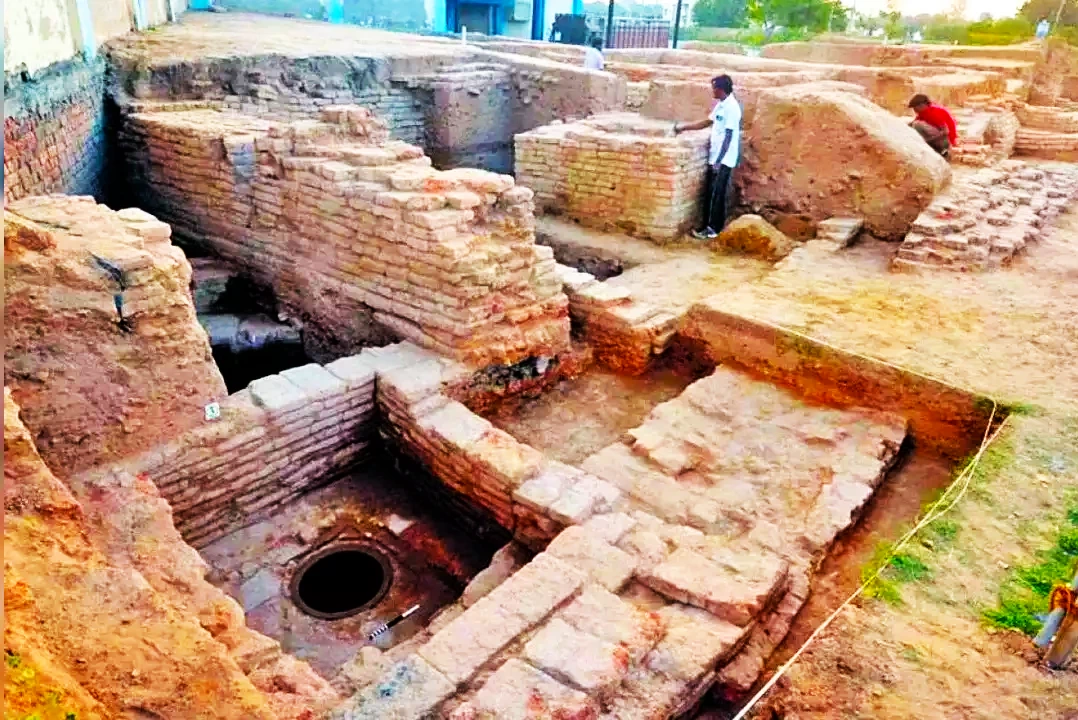Context:
A joint study by the Indian Institute of Technology (Kharagpur) has discovered evidence of cultural continuity in Vadnagar indicating the likelihood of the concept of a “Dark Age” being a myth.
Vadnagar is the Oldest Living City of India: Joint Study
- Multi-institution Efforts: The study was led by scientists from IIT Kharagpur, Archaeological Survey of India (ASI), Physical Research Laboratory (PRL), Jawaharlal Nehru University (JNU), and Deccan College.

Vadnagar Excavation: Key Highlights of the Study
- Evidence of Human Settlement: The evidence of a human settlement has been found that is as old as 800 BCE contemporary to late-Vedic/pre-Buddhist Mahajanapadas or oligarchic republics.
- Climate Change Behind Rise and Fall of Kingdoms: According to the study, the rise and fall of different kingdoms during the 3,000-year period and recurrent invasions of India by central Asian warriors were driven by severe change in climate like rainfall or droughts.
| Dark Age: The period between the collapse of the Indus Valley Civilisation and the emergence of the Iron Age and cities like Gandhar, Koshal, and Avanti is often depicted as a Dark Age by archaeologists. |
- Diverse Landscape of Vadnagar: Vadnagar was a multicultural and multireligious (Buddhist, Hindu, Jain and Islamic) settlement. Excavation revealed the presence of seven cultural stages (periods) i.e Mauryan, Indo-Greek, Indo-Scythian or Shaka-Kshatrapas, Hindu-Solankis, Sultanate-Mughal (Islamic) to Gaekwad-British colonial rule and the city endures even today.
- Buddhist Monastery: One of the oldest Buddhist monasteries has been discovered during the excavation.
- Discovery of Archaeological Artefacts at Vadnagar:
-
- Characteristic archaeological artefacts, potteries, copper, gold, silver and iron objects and intricately designed bangles have been found.
- Coin moulds of the Greek king Appollodatus during the Indo-Greek rule at Vadnagar were found.
- Archaeological records are rare, the earliest one being the rock-inscription of Emperor Ashoka during the Mauryan period (320-185 BCE) at Sudarsana Lake, Girnar hill, Gujarat.
- Significance:
- This evidence makes Vadnagar the oldest living city within a single fortification unearthed so far in India.
- Some of the recent unpublished radiocarbon dates suggest that the settlement could be as old as 1400 BCE contemporary to the late phase of the post-urban Harappan period.
- If this is true, then it suggests a cultural continuity in India for the last 5500 years and the so-called Dark Age may be a myth.
About Vadnagar
- Vadnagar is a town and municipality under Mehsana district of North Gujarat region of Gujarat state.
- It is mentioned in the travelogue of the Chinese traveler, Hieu-en-Tsang (7th century), as a rich and flourishing town.
- According to the inscription on the Arjun Bari Gate, King Kumarpal fortified the city in 1152 AD.
- The city includes historical structures, temples, fortification remains, water bodies, kothis, residential structures and excavated sites. Some of them include:
- Hatkeshwar Temple
- Kirti Torans
- Kirti Torans
- Paschim MehtaniVav
- Zunzunia Well
- Sharmishtha Lake
|
News Source: The Hindu
![]() 17 Jan 2024
17 Jan 2024

